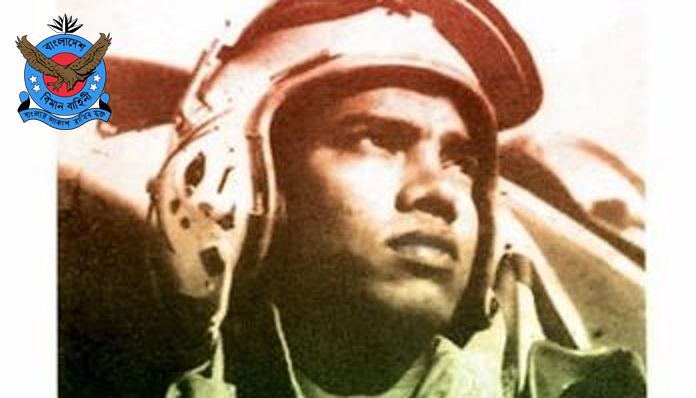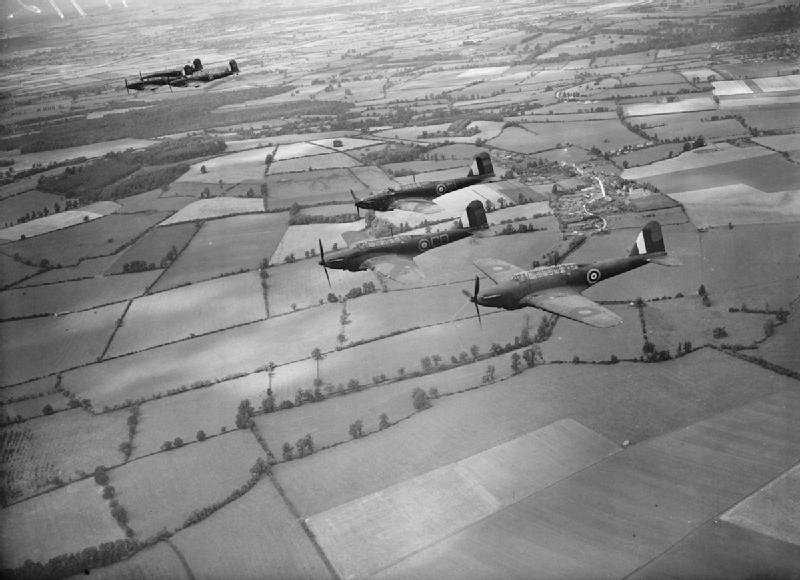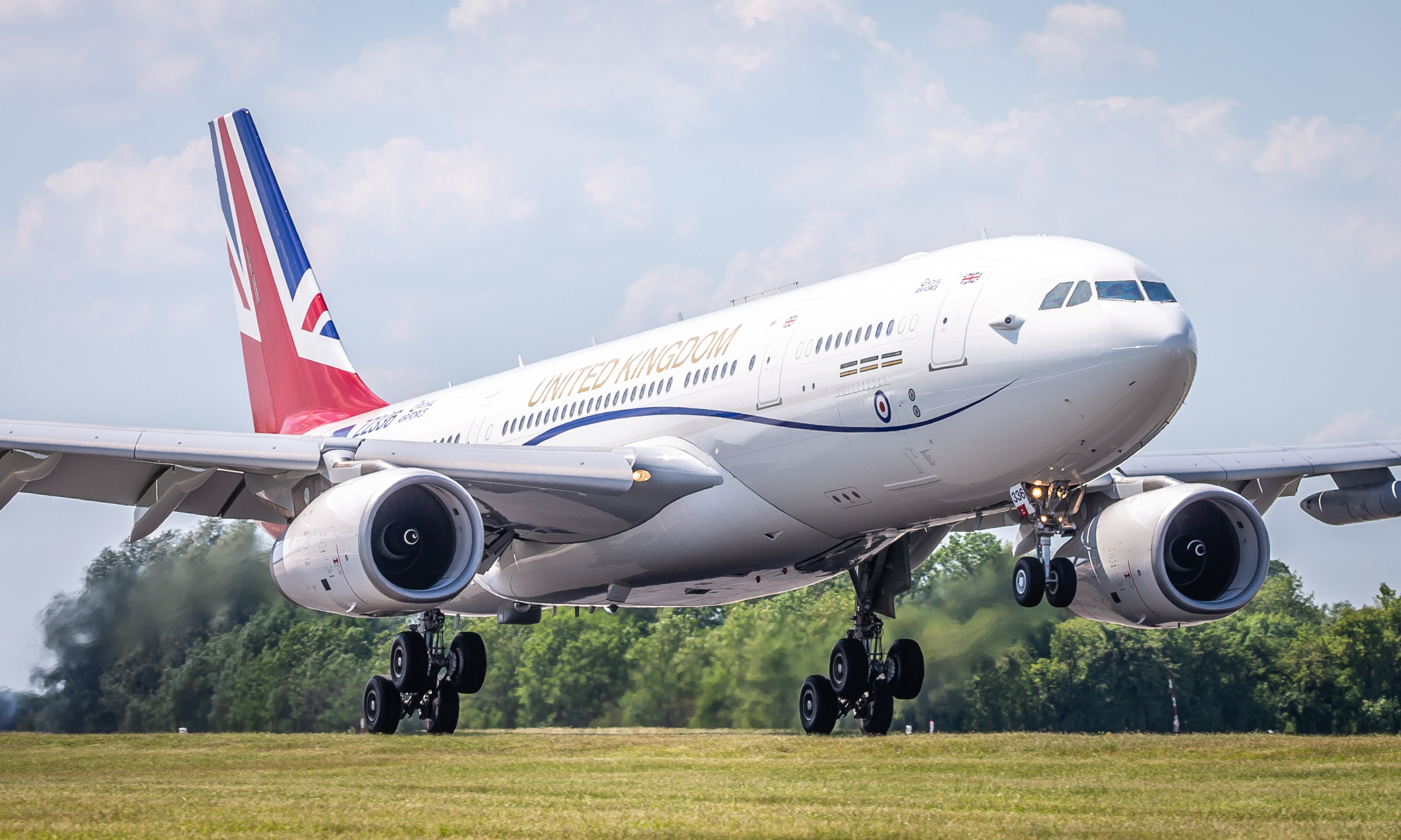|
G R 'Jock' Bryce
Gabe 'Jock' Robb Bryce, OBE (27 April 1921 – 7 May 2014) was a British aviator and chief test pilot for Vickers-Armstrong and later the British Aircraft Corporation. He flew, as pilot in command or Co-Pilot, the first flight of eleven prototype aircraft during his time as a test pilot, including the Vickers VC10, VC10. Biography Jock Bryce was born in Glasgow in 1921 and educated at Glasgow High School. He followed his brother into the Royal Air Force in 1939, joining as a Sergeant and undergoing flight training at RAF Prestwick, Prestwick and RAF Warmwell, Warmell. In 1940 he was posted to Special Duty Flight flying Bristol Blenheims from RAF Leuchars, RAF Wick, and RAF Christchurch. In 1942, Bryce was posted to No. 172 Squadron RAF, 172 Squadron at RM Chivenor, Chivenor to fly Wellingtons on anti-submarine patrol. He was commissioned in February 1943 and posted to Montréal–Trudeau International Airport, Dorval as part of RAF Transport Command, No. 45 (North Atlantic) Grou ... [...More Info...] [...Related Items...] OR: [Wikipedia] [Google] [Baidu] |
Order Of The British Empire
The Most Excellent Order of the British Empire is a British order of chivalry, rewarding contributions to the arts and sciences, work with charitable and welfare organisations, and public service outside the civil service. It was established on 4 June 1917 by King George V and comprises five classes across both civil and military divisions, the most senior two of which make the recipient either a knight if male or dame if female. There is also the related British Empire Medal, whose recipients are affiliated with, but not members of, the order. Recommendations for appointments to the Order of the British Empire were originally made on the nomination of the United Kingdom, the self-governing Dominions of the Empire (later Commonwealth) and the Viceroy of India. Nominations continue today from Commonwealth countries that participate in recommending British honours. Most Commonwealth countries ceased recommendations for appointments to the Order of the British Empire when they ... [...More Info...] [...Related Items...] OR: [Wikipedia] [Google] [Baidu] |
North Atlantic Air Ferry Route In World War II
The North Atlantic air ferry route was a series of Air Routes over the North Atlantic Ocean on which aircraft were ferried from the United States and Canada to Great Britain during World War II to support combat operations in the European Theater of Operations (ETO). The route was developed as one of four major routes along which United States aircraft were ferried to the major combat areas. It originated at several Army Air Bases in New England, which permitted short range single-engined aircraft to be flown to Britain using a series of intermediate airfields in Newfoundland, Labrador, Greenland and Iceland. Long-range multi-engined aircraft could be flown from Newfoundland directly using Great Circle routes to airfields in Ireland and southwest England; or via the Azores to the UK or airfields in French Morocco to support Allied air forces in the Mediterranean Theater of Operations (MTO). Later in the war, air routes over the North Atlantic were developed from South Florida ... [...More Info...] [...Related Items...] OR: [Wikipedia] [Google] [Baidu] |
Rolls-Royce RB
Rolls-Royce (always hyphenated) may refer to: * Rolls-Royce Limited, a British manufacturer of cars and later aero engines, founded in 1906, now defunct Automobiles * Rolls-Royce Motor Cars, the current car manufacturing company incorporated in 1998, a subsidiary of BMW Group * Rolls-Royce Motors, owner of the former car division incorporated in 1973, bought by Vickers in 1980, a subsidiary of Volkswagen Group from 1998 to 2002 * List of Rolls-Royce motor cars Aerospace and nuclear power * Rolls-Royce Holdings plc, an aerospace, power systems and defence company and Rolls-Royce's current principal operating company **Rolls-Royce Deutschland ***Rolls-Royce Power Systems ** Rolls-Royce Marine Power Operations ** Rolls-Royce North America ** Rolls-Royce Turbomeca ** Rolls-Royce Kamawea, now Kamewa ** Rolls-Royce Controls and Data Services See also * Rose Royce, an American soul and R&B group * Roll (other) * Royce (other) Markus Bennett is an American hip-hop re ... [...More Info...] [...Related Items...] OR: [Wikipedia] [Google] [Baidu] |
Vickers Viscount Variants
The Vickers Viscount was a medium-range airliner driven by four turboprop engines. The type was designed and manufactured in Britain from 1948 to 1963. Prototypes ;Type 630 :First prototype, with short fuselage (74 ft 6 in (22.71 m), accommodating 32 passengers and powered by four 1,380 ehp (1,032 kW) Rolls-Royce Dart R.Da Mk 501 engines.Andrews and Morgan 1988, p. 436. ;Type 663 :Second prototype, testbed for Rolls-Royce Tay turbojet. ;Type 640 :Planned third prototype, powered by four Napier Naiad turboprops. Not built, with parts incorporated in Type 700 prototype. Viscount 700 ;Type 700 :The first production version, 1,381 hp (1,030 kW) engines, 287 built, the "D" suffix was used for aircraft powered by the 1,576 hp (1,175 kW) Dart 510 engines. ;Type 701 :Production aircraft for British European Airways (BEA), the same as the prototype 700 but as in all production aircraft the engines were moved 18 inches outboard to reduce cab ... [...More Info...] [...Related Items...] OR: [Wikipedia] [Google] [Baidu] |
Vickers Viscount
The Vickers Viscount is a British medium-range turboprop airliner first flown in 1948 by Vickers-Armstrongs. A design requirement from the Brabazon Committee, it entered service in 1953 and was the first turboprop-powered airliner. The Viscount was well received by the public for its cabin conditions, which included pressurisation, reductions in vibration and noise, and panoramic windows. It became one of the most successful and profitable of the first post-war transport aircraft; 445 Viscounts were built for a range of international customers, including in North America. Development Origins The Viscount was a response to the 1943 Brabazon Committee's proposed Type II design for a post-war small medium-range pressurised aircraft to fly less-travelled routes, carrying 24 passengers up to 1,750 mi (2,816 km) at 200 mph (320 km/h).Cacutt 1989, pp. 323–333. During discussions between the committee and Vickers' chief designer, Rex Pierson, Vickers adv ... [...More Info...] [...Related Items...] OR: [Wikipedia] [Google] [Baidu] |
Vickers Varsity
The Vickers Varsity is a retired British twin-engined crew trainer operated by the Royal Air Force from 1951 to 1976. Design and development The Varsity was developed by Vickers and based on the Viking and Valetta to meet Air Ministry Specification T.13/48 for a twin-engined training aircraft to replace the Wellington T10 and the Valetta T3 and T4. The main differences were the wider-span wings, longer fuselage and tricycle undercarriage. There was also a ventral pannier to allow a trainee bomb aimer to lie in a prone position and a bomb bay with a capacity for 24 x 25lb smoke & flash bombs. The first prototype Type 668 Varsity VX828 was first flown by J 'Mutt' Summers and G R 'Jock' Bryce from Wisley on 17 July 1949. A civil version the VC.3 was planned but with the success of the VC.2 Viscount the idea was abandoned. Operational history The Varsity was introduced to replace the Wellington T10 trainer. Following deliveries to trials units the first production aircraft w ... [...More Info...] [...Related Items...] OR: [Wikipedia] [Google] [Baidu] |
Joseph Summers
Captain Joseph "Mutt" Summers, (10 March 1904 – 16 March 1954) was chief test pilot at Vickers-Armstrongs and Supermarine. During his career, Summers flew many first flights on prototype aircraft, (a record of 54 by a test pilot), from the Supermarine Spitfire, to the Vickers Valiant. He also holds the current second place record for 366 general types tested, below Eric "Winkle" Brown, Eric "Winkle" Brown's 487. Career Captain Joseph "Mutt" Summers received his nickname "Mutt" during his early days in the RAF from his habit of urinating before takeoff on the small rear wheel or skid of the aircraft he was testing. This led to his being accused of christening his aircraft like a dog marking its territory. He did this because he was aware that during some crashes a full bladder could prove fatal. Paul Brickhill (in ''The Dam Busters'') referred to the two test pilots Joseph Summers and Jeffrey Quill, as "Mutt" and "Jeff", alluding to the characters in the pioneering American com ... [...More Info...] [...Related Items...] OR: [Wikipedia] [Google] [Baidu] |
Vickers 663 Tay Viscount VX217 MoD FAR 09
Vickers was a British engineering company that existed from 1828 until 1999. It was formed in Sheffield as a steel foundry by Edward Vickers and his father-in-law, and soon became famous for casting church bells. The company went public in 1867, acquired more businesses, and began branching out into military hardware and shipbuilding. In 1911, the company expanded into aircraft manufacture and opened a flying school. They expanded even further into electrical and railway manufacturing, and in 1928 acquired an interest in the Supermarine. Beginning in the 1960s, various parts of the company were nationalised, and in 1999 the rest of the company was acquired by Rolls-Royce plc, who sold the defence arm to Alvis plc. The Vickers name lived on in Alvis Vickers, until the latter was acquired by BAE Systems in 2004 to form BAE Systems Land Systems. History Early history Vickers was formed in Sheffield as a steel foundry by Edward Vickers and his father-in-law George Naylor in 1 ... [...More Info...] [...Related Items...] OR: [Wikipedia] [Google] [Baidu] |
Flight Lieutenant
Flight lieutenant is a junior commissioned rank in air forces that use the Royal Air Force (RAF) system of ranks, especially in Commonwealth countries. It has a NATO rank code of OF-2. Flight lieutenant is abbreviated as Flt Lt in the Indian Air Force (IAF) and RAF, and as FLTLT in the Pakistan Air Force (PAF), Royal Australian Air Force (RAAF) and Royal New Zealand Air Force (RNZAF) and has sometimes also been abbreviated as F/L in many services; it has never been correctly abbreviated as "lieutenant". A flight lieutenant ranks above flying officer and below a squadron leader and is sometimes used as an English language translation of a similar rank in non-English-speaking countries. The rank originated in the Royal Naval Air Service (RNAS) in 1914. It fell into abeyance when the RNAS merged with the Royal Flying Corps during the First World War but was revived in 1919 in the post-war RAF. An RAF flight lieutenant is the equivalent of a lieutenant in th ... [...More Info...] [...Related Items...] OR: [Wikipedia] [Google] [Baidu] |
Vickers VC
Vickers was a British engineering company that existed from 1828 until 1999. It was formed in Sheffield as a steel foundry by Edward Vickers and his father-in-law, and soon became famous for casting church bells. The company went public in 1867, acquired more businesses, and began branching out into military hardware and shipbuilding. In 1911, the company expanded into aircraft manufacture and opened a flying school. They expanded even further into electrical and railway manufacturing, and in 1928 acquired an interest in the Supermarine. Beginning in the 1960s, various parts of the company were nationalised, and in 1999 the rest of the company was acquired by Rolls-Royce plc, who sold the defence arm to Alvis plc. The Vickers name lived on in Alvis Vickers, until the latter was acquired by BAE Systems in 2004 to form BAE Systems Land Systems. History Early history Vickers was formed in Sheffield as a steel foundry by Edward Vickers and his father-in-law George Naylor in 1 ... [...More Info...] [...Related Items...] OR: [Wikipedia] [Google] [Baidu] |
RAF Benson
Royal Air Force Benson or RAF Benson is a Royal Air Force (RAF) station located at Benson, near Wallingford, in South Oxfordshire, England. It is a front-line station and home to the RAF's fleet of Westland Puma HC2 support helicopters, used primarily for the transportation of troops & equipment. Flying squadrons comprise No. 33 Squadron & No. 230 Squadron flying the Puma, No. 22 Squadron which provides operational evaluation and training for all aircraft in Joint Helicopter Command and No. 28 Squadron, which is the combined Puma and Boeing Chinook HC6A training unit. Other units include the Oxford University Air Squadron and No. 6 Air Experience Flight, both flying the Grob Tutor T1 light training aircraft used for student and cadet flying training. The National Police Air Service and the Thames Valley Air Ambulance are also based at the station, both operating Airbus H135 helicopters. RAF Benson opened in 1939 and during the Second World War it was tasked with tra ... [...More Info...] [...Related Items...] OR: [Wikipedia] [Google] [Baidu] |
King's Flight
Air transport of the British royal family and government is provided, depending on the circumstances and availability, by a variety of military and civilian operators. This includes an Airbus Voyager of the Royal Air Force, No. 10 Squadron and the King's Helicopter Flight, which forms part of the royal household. Civil aircraft and scheduled commercial flights are also utilised. History Royal Family The first aircraft ordered specifically for transport of the royal family, two Westland Wapitis, were delivered to No. 24 Squadron at RAF Northolt in April 1928. Although the RAF maintained at least one of these aircraft for a time the Prince of Wales eventually became solely responsible for the aircraft. When the Prince ascended to the throne in 1936 as Edward VIII, The King's Flight was formed as the world's first head of state aircraft unit. In contrast the first flight of a sitting U.S. president was in January 1943. This unit initially used the King's own de Havilland ... [...More Info...] [...Related Items...] OR: [Wikipedia] [Google] [Baidu] |


.jpg)







